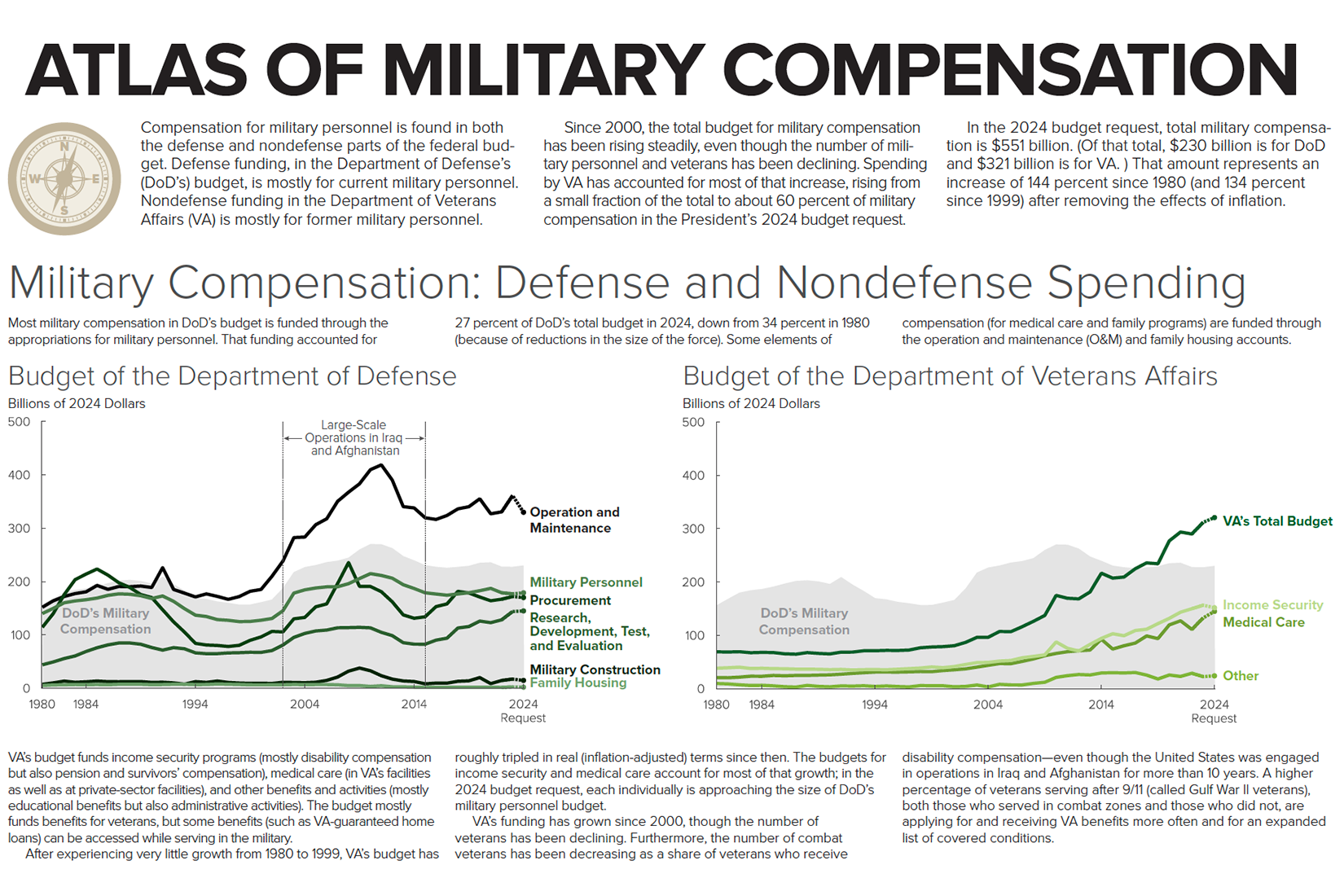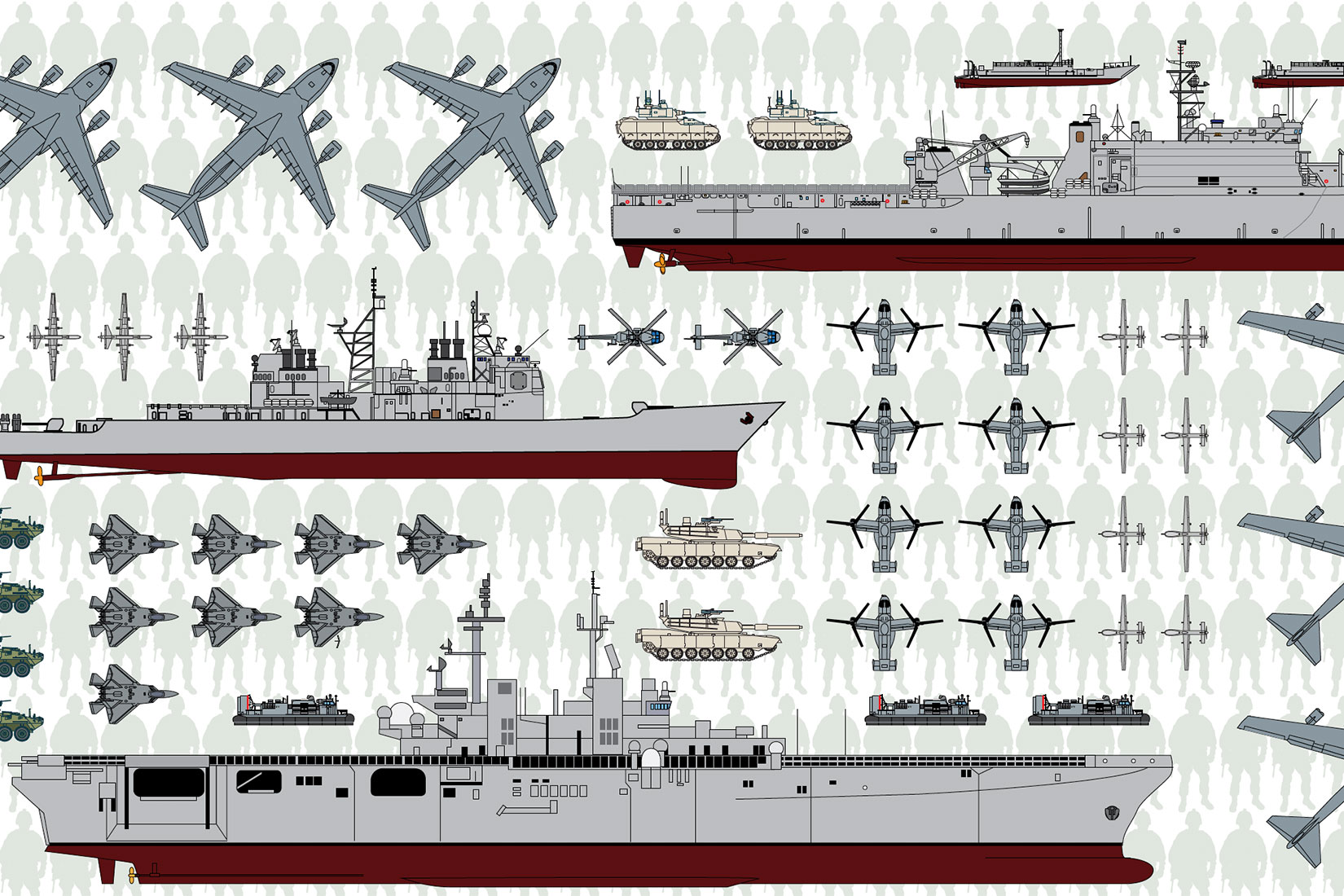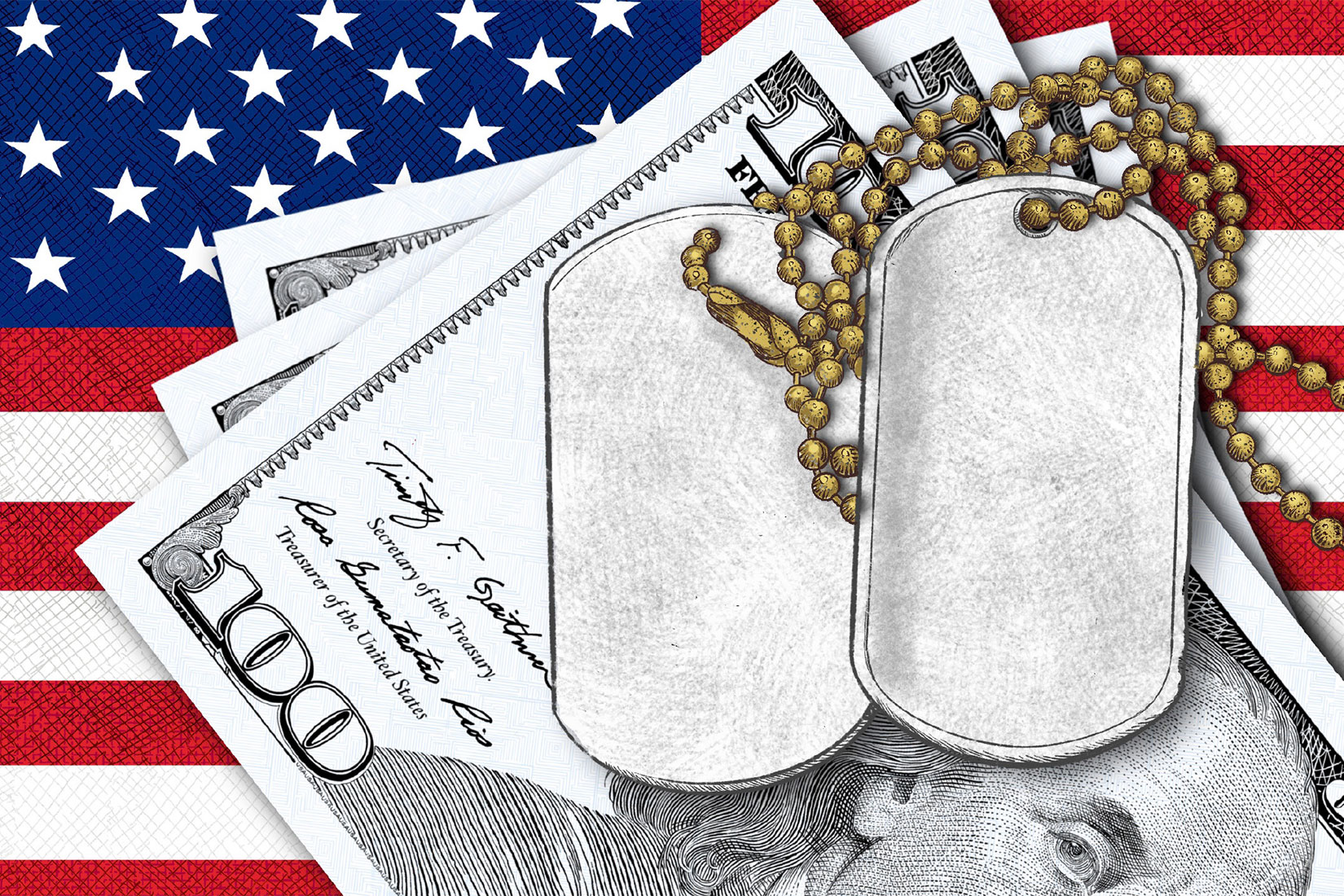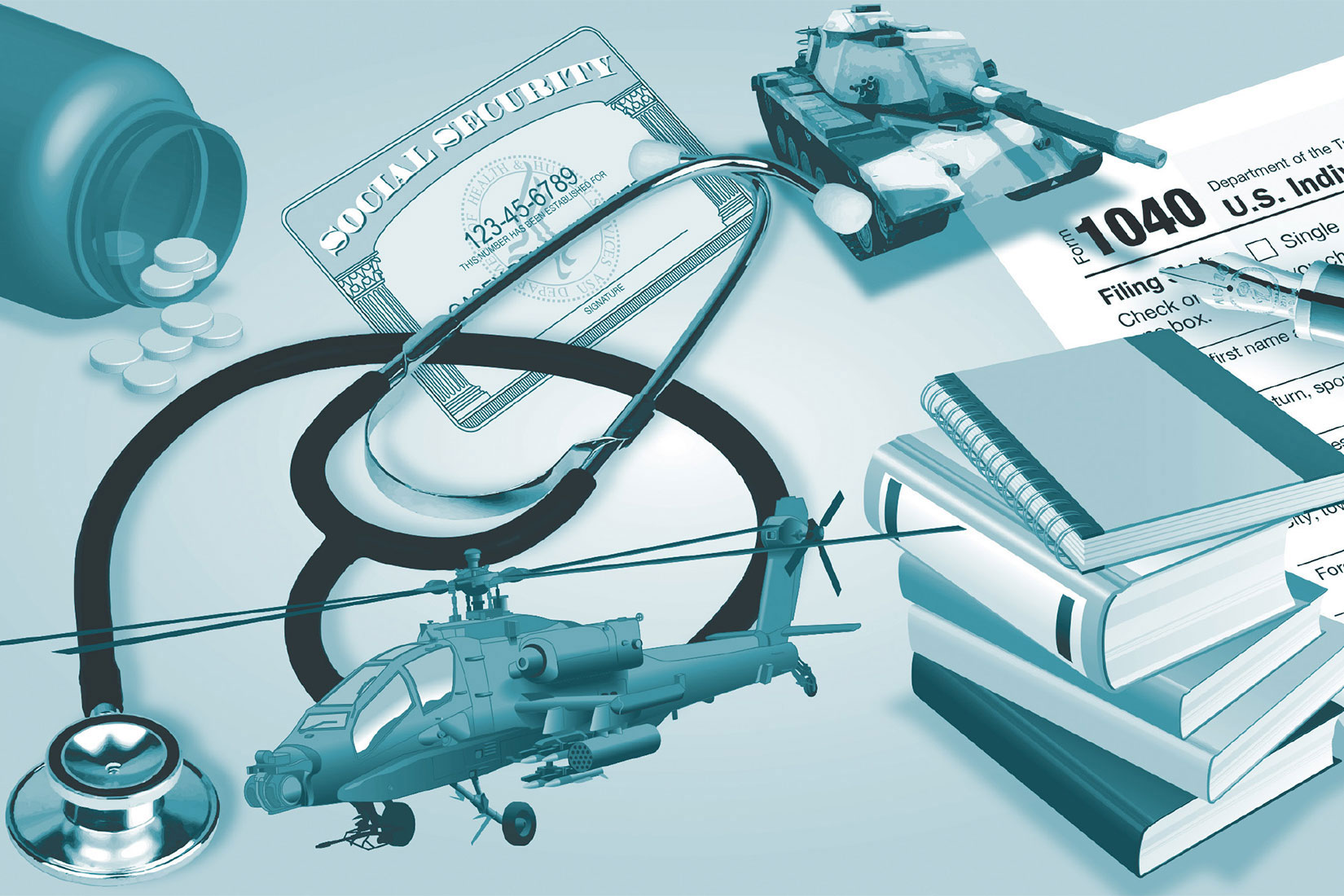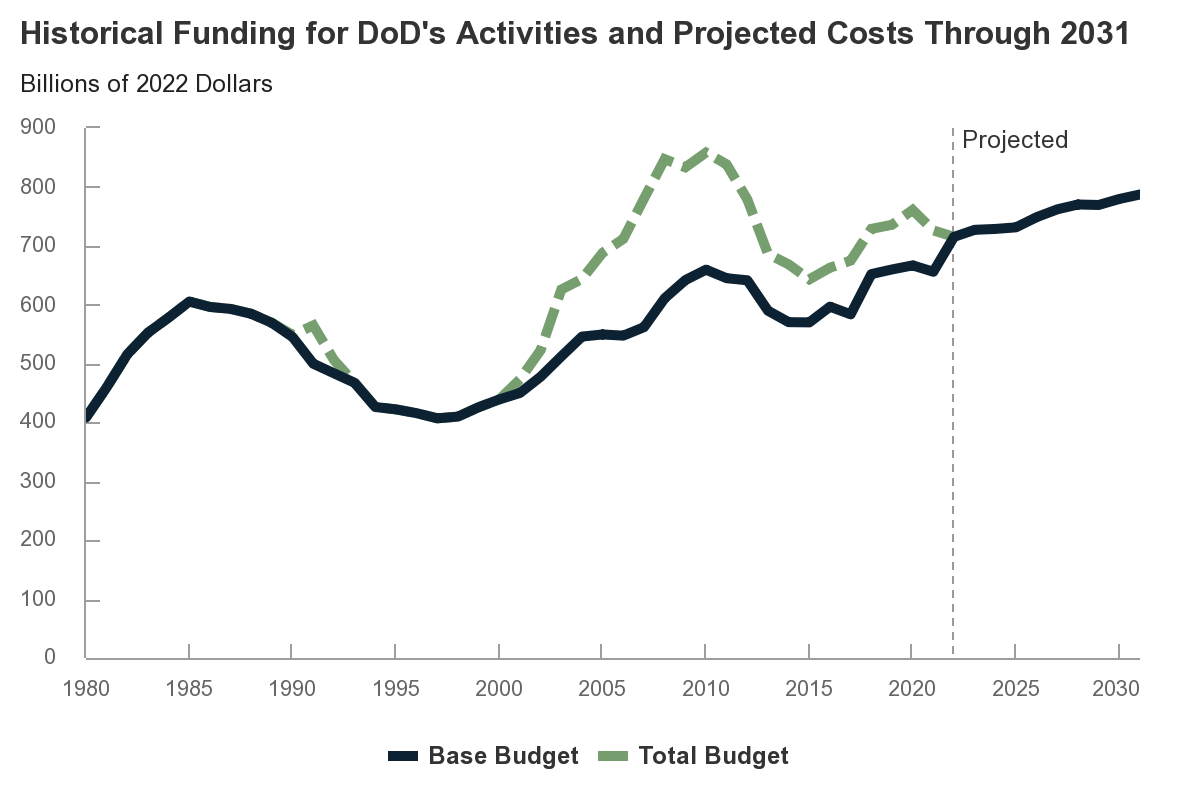CBO compares the housing standards used to determine the military’s basic allowance for housing (BAH) with the housing rented by comparable civilians. CBO also compares BAH rates with the rental costs paid by those civilians.
Military Personnel
- Report
CBO compared the earnings, personal income, and household income of working-age male veterans who received disability payments from the Department of Veterans Affairs with those of veterans who did not receive such payments.
- Graphic
In the President’s 2024 budget request, total military compensation is $551 billion, including veterans' benefits. That amount represents an increase of 134 percent since 1999 after removing the effects of inflation.
- Interactive
This tool allows the user to see the effects on the Department of Defense’s total operation and support costs and on the size of the military of adding or subtracting tanks, ships, aircraft, and other units.
- Report
CBO analyzes funding for special and incentive pay for active-duty service members in the Army, Navy, Air Force, and Marine Corps and explores how those types of pay have been used to address personnel shortfalls.
- Report
CBO issues a volume that contains short descriptions of 59 policy options that would each reduce the federal budget deficit by less than $300 billion over the next 10 years.
- Report
CBO analyzes DoD’s plans for 2022 as presented in the Biden Administration’s 2022 budget request and projects how those plans would affect defense costs through 2031. Those costs would increase by 10 percent over that period, CBO projects.
- Report
CBO examined three broad options for reconfiguring the military if funding for the Department of Defense was reduced by $1 trillion (in 2022 dollars), or 14 percent, over the next 10 years.
- Report
CBO examines the implications of adjusting military basic pay with an alternative wage index and adjusting all components of regular cash pay with the employment cost index.
- Report
This update of CBO’s 2016 primer on the structure of the U.S. military describes the size, functions, and operation and support costs of every major element of the armed forces.
- Report
CBO examines two options for establishing a Space National Guard to support active component Space Force personnel, estimating the additional costs beyond those incurred for existing Air and Army National Guard units that have space-related missions.
- Report
This report examines military compensation and its effects on recruitment, retention, and motivation. CBO also provides a comparison with civilian compensation packages and examines five possible approaches for altering the way that DoD compensates military personnel.
- Report
In 2016, members of the reserve component received an average of $12,500 in benefits (measured in 2018 dollars) under the Post-9/11 GI Bill. This report describes their use of those benefits and compares how the reserve and regular components use their benefits.
- Report
From 2010 through 2016, the Veterans Benefits Administration spent $65 billion on educational benefits for 1.6 million veterans, spouses and children, mostly for veterans’ tuition, fees, and housing. In 2016, VBA spent an average of $17,400 per beneficiary.




